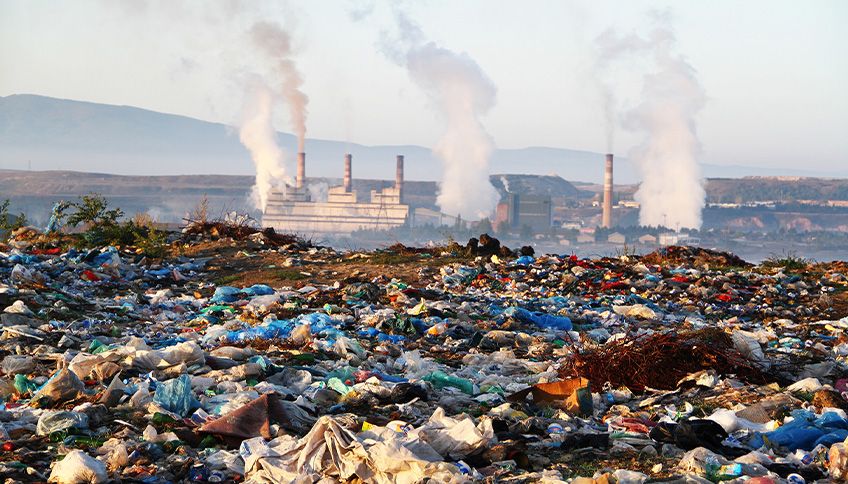Leading the global charge on methane reductions

Partner: Global Methane Hub
Grant amount: $20 million over 3 years (2022 – 2024)
Overview
The Global Methane Hub (GMH) is working to dramatically reduce methane levels in the atmosphere to protect people and the planet from the worst impacts of climate change.
Quadrature Climate Foundation (QCF) supports GMH’s work in coordinating, funding, and delivering impactful solutions across the methane-emitting sectors, paving the way for the world to mitigate one of its most potent greenhouse gases.
The challenge
With QCF’s backing, GMH is working to pull the emergency brake on global warming through methane abatement.
Methane is responsible for roughly 45% of recent net global warming. Despite this, efforts to mitigate methane emissions have been fragmented and underfunded.
Mitigating methane is the fastest and most efficient way to slow the rate of global warming in the short-term. Its global warming potential is over 86 times greater than carbon dioxide over a 20-year period, making immediate action essential.
Methane is released from various sources, including agriculture, fossil fuels, and waste, making it a critical target for near-term climate action.

The approach
GMH drives down atmospheric methane through:
- Thought leadership and coordination: Devising and coordinating international strategies, finding and filling strategic gaps and urgent needs, and keeping abreast of the grantee landscape and the rapidly changing political and corporate environment.
- Aligned measurement of results: Creating and reporting on attainment of goals and tonnes reduced using a mutually agreed upon broad base of technologies and metrics. GMH also tracks funding into the field.
- Supporting grantees: Ensuring grantees are adequately resourced for all functions and creating or bringing in other grantees in key geographies or areas. GMH supports collaboration, as well as spotting emerging issues and opportunities for grantees.
- Building common tools: These include communications, maps, peer-reviewed research and policymaker outreach.
- Centralised fundraising and support: Providing an easy network for funders to engage in all or a part of the work along with regular funder follow-up materials. GMH also connects funders to each other as well as to areas of interest.
Across these tactics GMH adopts a dual approach: working ‘top-down’ with government leaders, corporations, and funders, while simultaneously engaging ‘bottom-up’ with NGOs, academics, local administrations, and grassroots leaders.
Key outputs and actions:
- Financial grants: GMH has regranted $203 million to more than 132 organisations, impacting over 150 countries that account for over 80% of global methane emissions. These grants have enabled local initiatives, supported research, and fostered technological innovations.
- Capacity building and partnerships: Through partnerships with government leaders, business coalitions, companies, and other actors, GMH is building a global network to drive methane reduction. This includes advancing methane-specific targets in Nationally Determined Contributions (NDCs) in approximately 50 countries, including major emitters like the US, China and India.
- Development of common tools: GMH has created essential resources, including communication maps, peer-reviewed research, and policymaker outreach, which help align methane reduction efforts across regions and sectors. It has also developed measurement tools for reporting on methane reduction achievements, using broad technology and metrics.
Key outcomes:
- Policy advancement: GMH has successfully supported methane reduction policies and projects in more than 150 countries. By connecting methane reduction with local government priorities such as economic development and public health, GMH has managed to influence both national and local climate agendas.
- Sectoral reduction targets: GMH is driving ambitious targets for methane reduction across key sectors: 75% reduction in the energy sector, 10% in agriculture, and 35% in waste by 2030.
- Technological innovation: GMH supports the development and commercialisation of methane mitigation technologies, such as methane capture in livestock and rice production, oxidation for abandoned mines and landfills, and logistics systems to prevent food loss and waste.
Methane is one of the most potent greenhouse gases, and tackling it offers the fastest opportunity to slow global warming. By working with governments, corporations, and grassroots organisations, we are building the partnerships, technologies, and strategies needed to achieve meaningful reductions. Our goal of a 35% cut in methane emissions by 2030 is ambitious, but with continued collaboration and innovation, it is within our reach—and essential for safeguarding the future of our planet.
Impact:
- Global coordination: Through its central role in coordinating global methane reduction efforts, GMH has built strong alliances across diverse regions, influencing policy shifts and the redirection of funding to methane abatement efforts. Notable impact has been seen in key countries like China and India, where GMH’s strategic involvement has driven methane-specific goals in national climate plans.
- Technological advancement: GMH’s support for methane mitigation technology development is a crucial story of impact. Technologies to reduce methane emissions in agriculture (livestock and rice production) and energy (oxidation for mines and landfills) have been accelerated, contributing to methane reductions on a global scale.
- Data-driven accountability: GMH has also played a pioneering role in using satellite data to monitor methane emissions and guide decision-making. This data is increasingly being used by governments to inform national regulations, such as import standards, and to enhance accountability for methane reduction targets.
Looking ahead
Looking ahead, the Global Methane Hub is well-positioned to meet its ambitious goal of reducing global methane emissions by 35% by 2030. GMH will continue to build partnerships, support the development of methane-reducing technologies, and influence financial flows to align with its mission of methane abatement. Satellite data will remain a critical tool in holding governments and industries accountable to these targets.